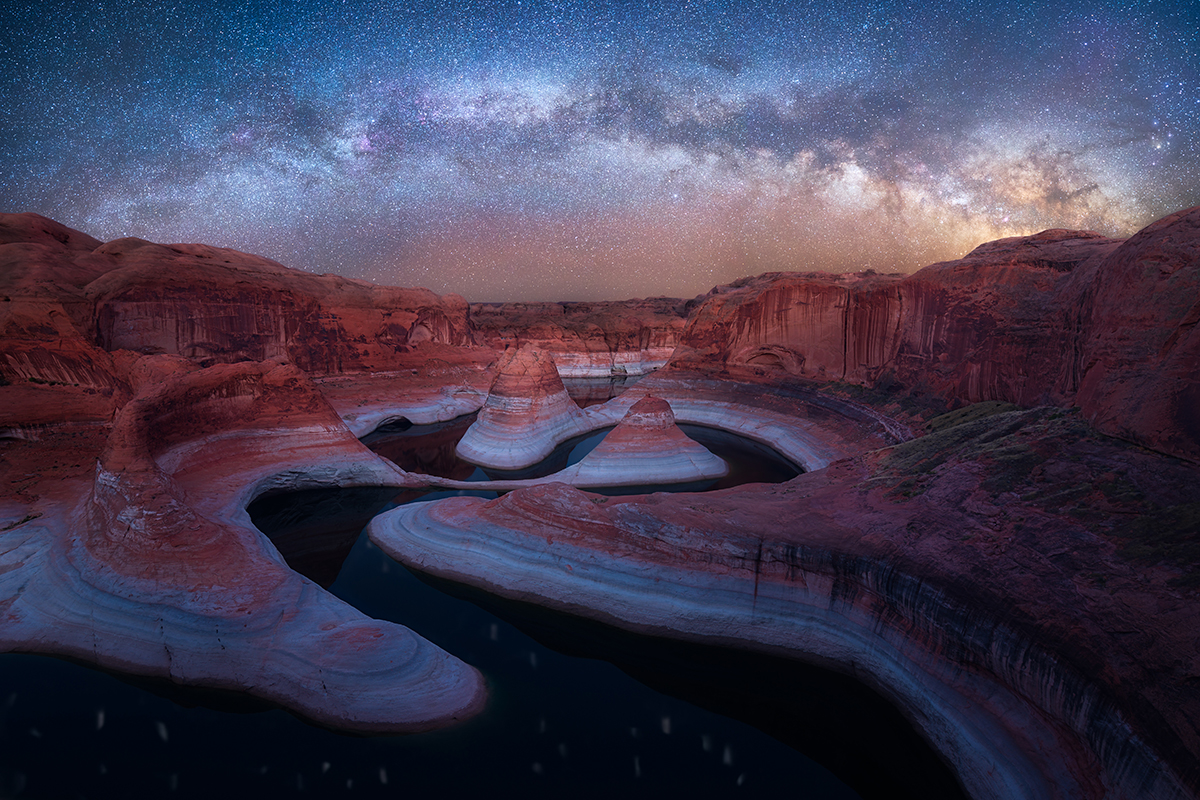Chasing the Light
When the workday is done, Marcin Zajac uses the Tamron SP 15-30mm F/2.8 VC G2 and SP 24-70mm F/2.8 VC G2 lenses to capture everything from astrophotography to “alien thrones.”
More Photo Tips | Video Gallery | Photo Gallery | Enewsletter sign-up
By Jenn Gidman
Images by Marcin Zajac
During the day, Marcin Zajac immerses himself in the world of developing systems and software, creating solutions for clients in his job as a software engineer. After he clocks out, it’s an entirely different world he explores, with camera gear in hand and an eye toward chasing the light to capture the landscapes near his Northern California home and beyond.
“Where I live is a fantastic environment for the type of photography I like to do,” the Polish-born photographer says. “I love the mountains and open skies for my astrophotography. It can be challenging sometimes to balance work life with my photography, but I tried to take advantage of the remote work I was doing for much of last year by taking more road trips and getting outside more.”

24-70mm (24mm), F/2.8, 4 min. (tracked), ISO 800
Click image to view larger
Sunrise, sunset, and after dark are Marcin’s favorite times to venture out with his camera. “Light is super important to me,” he says. “You can find yourself at the most stunning location in the world, but if the light is boring, it will break your image. And so I’ll find a beautiful landscape and then strive to photograph it only under the best conditions possible. That could mean during a colorful sunset, or under a bit of cloud cover, or surrounded by a clear night sky. It depends on the location, and on the image I’m trying to create.”
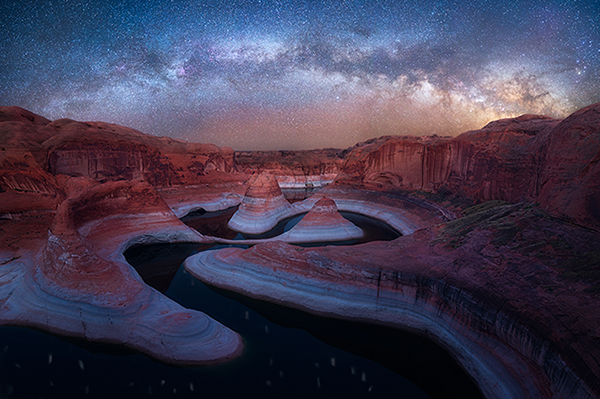
15-30mm (15mm), F/2.8, 4 min. (tracked), ISO 800
Click image to view larger

24-70mm (45mm), F/5.6, 2 min., ISO 400
Click image to view larger
Whether he’s shooting San Francisco’s “Painted Ladies” row of Victorian homes, a sunset beach scene, or star trails above an otherworldly landscape, Marcin is sure to have his Tamron SP 15-30mm F/2.8 VC G2 wide-angle and SP 24-70mm F/2.8 VC G2 zoom along for the ride. “These lenses offer high-quality, sharp optics, which I need for my work,” he says. “Landscape imagery demands that. The fact that both of these lenses feature that F/2.8 maximum aperture is also key, as I do much of my shooting in lower-light situations.”
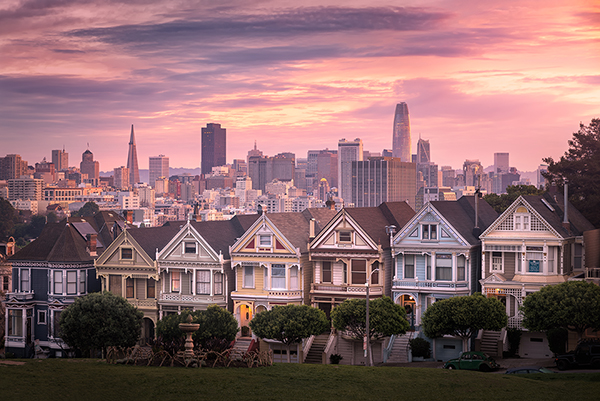
24-70mm (70mm), F/8, 1/20th sec., ISO 100
Click image to view larger
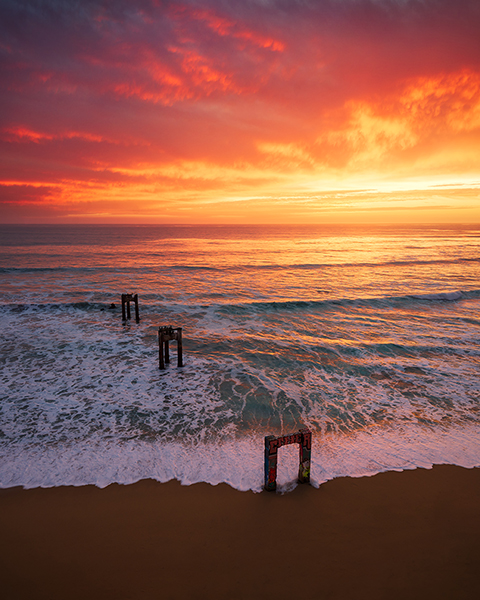
24-70mm (24mm), F/8, 1/50th sec., ISO 100
Click image to view larger
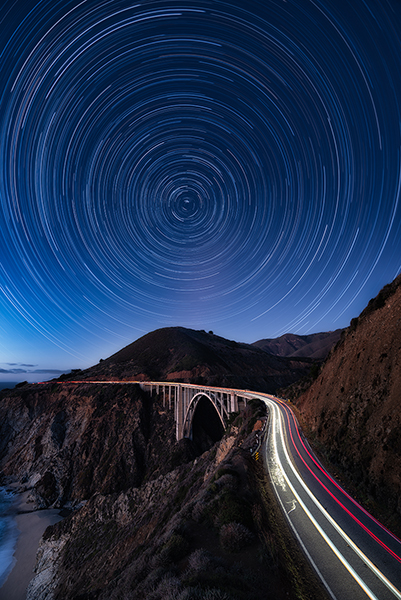
15-30mm (15mm), F/2.8, 5 min. (40 exposures blended), ISO 100
Click image to view larger
One of Marcin’s images has recently picked up quite a bit of buzz and entered the awards circuit. “Alien Throne,” taken in the New Mexico badlands, has already won Tamron’s World Through Your Lens/Travel top prize (part of the American Photography Open 2021 competition, for which Marcin is now a finalist), and it was also on the short list for Royal Museums Greenwich’s Astronomy Photographer of the Year competition.
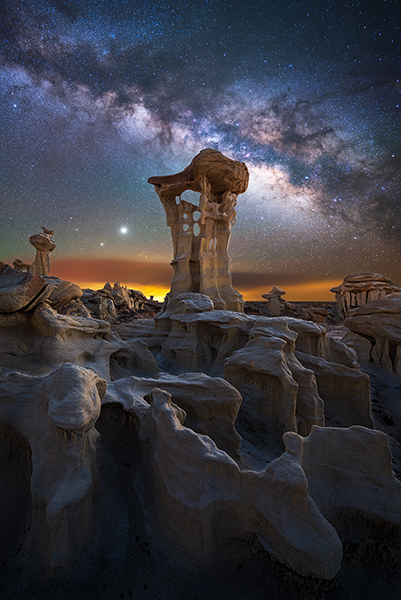
15-30mm (15mm), F/2.8, 2 min. (tracked), ISO 800
Click image to view larger
Marcin’s award-winning photo was taken at the Ah-Shi-Sle-Pah Wilderness Study Area, a site he says is one of the most bizarre locations he’s ever experienced. “It feels like you’re on another planet,” he says. “Taking a photo of the sandstone rock formations against the night sky was ideal, because it made it look even more like a different world. I also had a bit of luck when taking this shot. I didn’t realize that Jupiter and Saturn were going to be so close to the Milky Way that night, and to each other. They normally aren’t that close together, so that turned out to be a special complement to the image I wasn’t expecting.”
Seeking balance is Marcin’s goal when composing a photo. “There are so many different rules, and you obviously don't want to follow all of them all of the time,” he says. “Breaking the rules can make your landscape photos more interesting. But you should always have a clear subject, and also secondary subjects that you draw some attention to—just not all of the attention. You want those secondary elements to lead the visual path right to the main subject so you’re able to tell a story.”
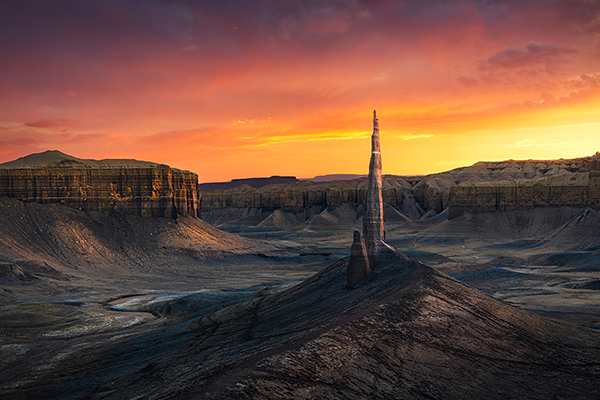
24-70mm (45mm), F/8, 1/50th sec., ISO 100
Click image to view larger
Marcin spends a good amount of time in post-processing, often more than an hour on each photo. “Even though I want to capture as much of the natural landscape as possible, I also want to make each image pop,” he says. “Sometimes the raw file doesn’t capture the scene as well as I would’ve liked. I do the work I have to on the computer to make it come out just the way I saw it. Plus, in astrophotography, there’s the added challenge of having one exposure for the sky and one exposure for the landscape, which is a common technique I use. To blend those two together seamlessly also takes time, but I love to do it, because I know the results I’ll come out with.”
To see more of Marcin Zajac’s work, go to https://marcinzajac.square.site or check out his Instagram.
More Photo Tips | Watch Videos | Learn More About Tamron Lenses | Photo Gallery
